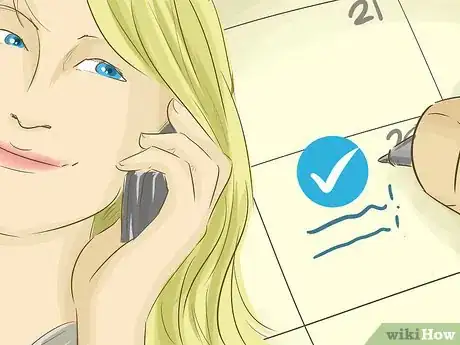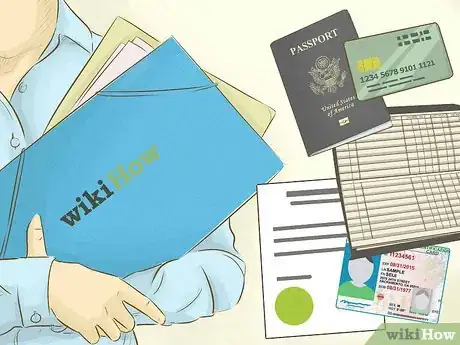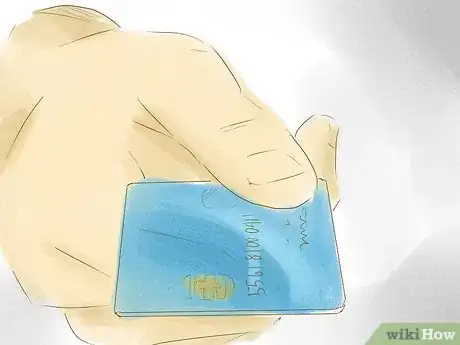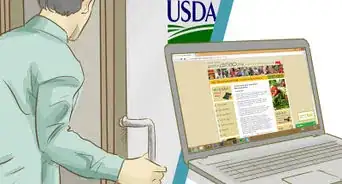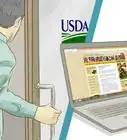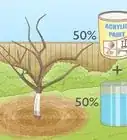This article was co-authored by Clinton M. Sandvick, JD, PhD. Clinton M. Sandvick worked as a civil litigator in California for over 7 years. He received his JD from the University of Wisconsin-Madison in 1998 and his PhD in American History from the University of Oregon in 2013.
There are 9 references cited in this article, which can be found at the bottom of the page.
This article has been viewed 22,338 times.
The CalFresh program, which was previously known as the food stamps program, is the food assistance program in the state of California. The United States Department of Agriculture (USDA) funds the program at the federal level through the Supplemental Nutrition Assistance Program (SNAP). CalFresh provides funds for low-income households to purchase supplemental food on a monthly basis. CalFresh benefits are used at grocery stores in place of money.
Steps
Understanding the Process
-
1Learn about the local process. Applying to CalFresh varies based on the county of California in which you reside. To determine the specifics of the application process in your county and to begin your own application, contact your local county welfare office. [1] [2]
- Certain community and faith-based organizations as well as county welfare outreach centers provide assistance with the CalFresh application process as well. [3]
-
2Determine your eligibility. Your eligibility for CalFresh is based on household income and number of people in your household.
- A household is defined as a single person living alone or a family or group of people who live together and jointly purchase food. Parents and live-in children under the age of 22 qualify as a household.
- Other qualifications for eligibility to the program include that the members of the household are also beneficiaries of certain other California welfare programs, have limited income and property, and are U.S. citizens or legal residents.
- The income requirement is based on a percentage of the federal poverty level (FPL), which is a measure of income level that is issued annually by the federal Department of Health and Human Services (HHS), and the number of people living in the household. This is a state-wide income range that changes by year for the entire CalFresh program (all counties) depending on the shift of the FPL.
- Those who are not U.S. citizens or legal residents or who already receive Supplement Security Income/State Supplementary Payments (SSI/SSP) are not eligible for CalFresh. [4]
Advertisement -
3Investigate other eligibility and expedited services. Automatic eligibility and an express application process might be available to certain applicants.
- Households that are already receiving aid in the form of cash through CalWORKS, another aid program in the state that gives funds to needy families, or through General Assistance/General Relief by the state, are automatically deemed eligible for CalFresh.
- A household that has less than $150 of gross monthly income and $100 of liquid resources or less, is made up of those who are considered destitute migrant or seasonal farm workers, has less gross income and liquid resources than the total monthly rent or mortgage and utilities for the residence, or is homeless are eligible for an expedited application process. In this case, not all information must be verified before benefits are provided and benefits are available to applicants within three days of the filing of the application.
Filling out the Paperwork
-
1Obtain the application. To obtain an application visit your county welfare office in person. You can also request an application by faxing or calling the local welfare office. An online version of the application is also available on the California Department of Social Services' website and the Benefitscal.com website. Adobe Acrobat Reader is necessary in order to download the application. [5] [6] [7]
-
2Name a household member. One member of the household must be prepared to sign the application. In signing the application, the household member is swearing the information on the application to be true under the penalty of perjury. [8]
-
3Fill out and file the application. The application must be filled out to the extent possible and filed with your local county welfare office. You may submit the application in person, via mail or fax, or electronically.
- At a minimum, the application must include a name, address, and signature in order to be accepted under the CalFresh program.
- However, fill out the application as fully as possible. Some of the requested information includes the household’s gross income and properties, eligibility for other government programs, and interview time preference. [9]
Doing an Interview
-
1Schedule the interview. An interview is required to obtain benefits under CalFresh. Once your application is turned in to the local welfare office, an interview, which is conducted either in person at the county office or over the phone, can be scheduled.
- The timeline as to how soon the interview can occur will depend on your local welfare office.
- An in-person interview may not be required if the office finds that traveling to the local welfare office would constitute a hardship for members of the family.
- Either the household head, a spouse, or an authorized and responsible family member must be present for the interview.
-
2Prepare for the interview. Certain documents must be brought to an in-person interview. The applicant should attend the interview even if all this documentation is not available since additional time may be given to submit the necessary documentation. These required documents include:
- proof of identity, for instance a driver’s license or alien status identification;
- the Social Security numbers for each of the members of the household;
- proof of income for the last 30 days, if any members of the household are employed;
- bank statements for all accounts including checking, savings, retirement, savings, credit unions, stocks, bonds, and dividends;
- proof of costs for shelter including rent or mortgage payments, other shelter or lot payments, and utilities. [10]
-
3Attend the interview. At the scheduled time, ensure that the appointed household member attends the interview either in person or over the phone.
- At the interview, the eligibility requirements will be discussed and the benefits will be explained.
- The interviewer will also help you fill out any parts of the application that were not previously filled out. [11]
-
4Ensure verification of your application. In addition to what is brought as documentation to the interview, the CalFresh interviewer will eventually need verification of certain representations made on the application before benefits are received.
- Proper personal identification, immigration status, sponsored non-citizen information (if applicable), residency, Social Security number (for all household members), gross income, evidence of disabilities, utility expenses, medical expenses, and child support obligations must all be verified before benefits are approved.
- Benefits will be available 30 days after the date of the application once the necessary verifications are made.
-
5Receive your benefits. Paper stamps are no longer used for the CalFresh program. Instead benefits are transferred to recipients using an Electronic Benefit Transfer (EBT) card. The funds are electronically deposited on the card and the recipients are given PIN numbers to access the funds on the card. [12]
References
- ↑ http://www.calfresh.ca.gov/PG847.htm
- ↑ http://www.calfresh.ca.gov/PG839.htm
- ↑ http://file.lacounty.gov/SDSInter/dpss/238505_Countywide_Outreach_District_Offices_Site_and_Contact_Information_Revised_2.13.pdf
- ↑ http://dpss.lacounty.gov/wps/portal/dpss/main/programs-and-services/calfresh/eligibility/
- ↑ http://www.calfresh.ca.gov/PG847.htm#cat
- ↑ http://www.calfresh.ca.gov/PG839.htm
- ↑ http://www.benefitscal.org/
- ↑ http://www.calfresh.ca.gov/PG847.htm#member
- ↑ http://www.calfresh.ca.gov/PG847.htm#member






